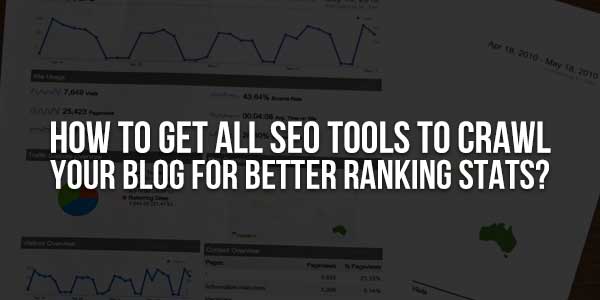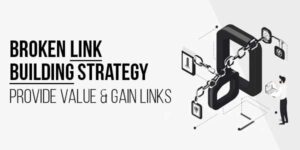
If you’re serious about improving your blog’s search rankings, you need to ensure that SEO tools can crawl and analyze your content effectively. Search engines and third-party SEO tools rely on crawling to gather data about your site. The more accessible your blog is to these crawlers, the better your chances of ranking higher in search results.
Table of Contents
Why Allowing SEO Tools To Crawl Your Blog Matters
SEO tools provide valuable insights that help you optimize your content, track rankings, and outperform competitors. When these tools can crawl your blog without restrictions, you gain access to:
- Accurate ranking reports for your target keywords
- Detailed technical SEO audits
- Competitor backlink analysis
- Content gap opportunities
- Performance benchmarking
“The websites that rank best are those that make themselves completely transparent to search engine crawlers and SEO analysis tools.” – ExeIdeas SEO Team
Essential Steps To Allow SEO Tools To Crawl Your Blog
1. Optimize Your Robots.Txt File
Your robots.txt file acts as a guide for crawlers. To ensure SEO tools can access your content:
- Remove unnecessary disallow directives
- Specify your sitemap location
- Allow access to important directories
- Test with Google Search Console’s robots.txt tester
For more technical guidance, check out our technical SEO guides.
2. Submit And Update Your XML Sitemap
An updated XML sitemap helps crawlers discover all your important pages:
- Submit to Google Search Console and Bing Webmaster Tools
- Include all priority pages
- Update after publishing new content
- Create separate sitemaps for different content types
3. Improve Your Site’s Crawlability
Enhance how easily crawlers can navigate your site:
- Fix broken links that create crawl traps
- Simplify your site architecture
- Use descriptive internal linking
- Reduce duplicate content issues
4. Verify Your Site With Major SEO Tools
Most SEO platforms require site verification:
- Google Search Console
- Bing Webmaster Tools
- Ahrefs Webmaster Tools
- SEMrush Position Tracking
- Moz Pro
5. Monitor Crawl Budget Usage
Ensure search engines allocate sufficient resources to crawl your site:
- Identify and fix crawl errors
- Prioritize important pages
- Reduce server response times
- Eliminate unnecessary redirects

Advanced Techniques For Better Crawling
1. Implement Proper HTTP Status Codes
Ensure your server returns the correct responses:
- 200 OK for accessible pages
- 301 for permanent redirects
- 404 for deleted pages
- 410 for intentionally removed content
2. Optimize Your Server Configuration
Technical setup affects crawling efficiency:
- Enable gzip compression
- Implement caching headers
- Use a reliable hosting provider
- Monitor server uptime
3. Leverage The Power Of Internal Linking
A strong internal link structure guides crawlers:
- Link related content naturally
- Use descriptive anchor texts
- Create topic clusters
- Include links in your main navigation
Common Mistakes That Block SEO Tools
Avoid these frequent errors that prevent proper crawling:
- Accidentally blocking crawlers in robots.txt
- Using meta noindex incorrectly
- Having broken sitemap references
- Implementing aggressive crawl rate limiting
- Using JavaScript for critical content without proper implementation
Tools To Monitor Your Crawl Accessibility
Use these tools to check how SEO tools view your site:
- Google Search Console Coverage Report
- Screaming Frog SEO Spider
- DeepCrawl
- Sitebulb
- Ahrefs Site Audit
For more tool recommendations, explore our comprehensive SEO tools list.
Frequently Asked Questions
How Often Should I Check My Crawl Stats?
Monitor crawl statistics at least monthly, or immediately after making significant site changes. Regular monitoring helps identify issues before they impact rankings.
Can Too Much Crawling Hurt My Site?
While legitimate SEO tools won’t harm your site, excessive bot traffic from low-quality sources can strain servers. Implement rate limiting if needed, but don’t restrict reputable crawlers.
Should I Allow All Crawlers Access To My Site?
Prioritize major search engines and reputable SEO tools. You can block known malicious bots while allowing legitimate crawlers that provide value.
Final Thoughts
Making your blog fully accessible to SEO tools is a fundamental step toward better search visibility. By implementing these strategies, you’ll ensure crawlers can properly index and analyze your content, leading to more accurate ranking data and actionable insights.
Remember that SEO success comes from both creating great content and ensuring it can be properly discovered and evaluated. Start with these crawl optimization techniques today to give your blog the best chance of ranking well in search results.
For more advanced SEO strategies, check out our complete collection of SEO guides.


















Good blog! EXEIdeas consistently shares insightful content on blogging, SEO, and tech trends—truly a valuable resource for digital enthusiasts.
Welcome here and thanks for reading our article and sharing your view. This will be very helpful to us to let us motivate to provide you with more awesome and valuable content from a different mind. Thanks again.
Great breakdown! Allowing SEO tools to crawl your blog is crucial for accurate insights and higher rankings. The tips on optimizing robots.txt, updating sitemaps, and verifying with major tools are especially helpful. Clear, actionable, and essential for any blogger serious about SEO performance and visibility. Thanks for the guide!
Welcome here and thanks for reading our article and sharing your view. This will be very helpful to us to let us motivate to provide you with more awesome and valuable content from a different mind. Thanks again.